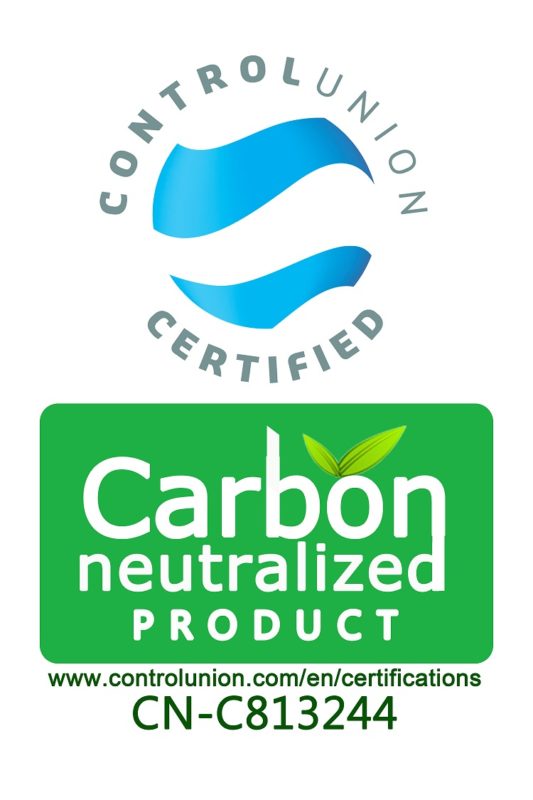Reducing the Carbon Footprint of your New Mattress
In recent decades, the world has undergone an unprecedented change in climate, with global temperatures rising steadily from the beginning of the industrial revolution and in particular, over the past 30 years. We are now at a point where governments are being forced to stop ignoring this growing issue, with measures being put in place all over the world to slow down or limit the amount of carbon being released into the atmosphere.
The worrying trend of climate change has forced businesses to act, and as consumers, we are now able to make purchases that not only satisfy our wants and needs, but are sustainable as well. In recent years, businesses have been working on ways to limit carbon release in a shift towards carbon neutrality. But how about the mattress industry? For most of us, a mattress is a large investment and one we take seriously. Is it possible to make a sustainable choice when mattress shopping? Does carbon neutrality apply in the mattress manufacturing process? And how can consumers see through marketing jargon to choose a bed that is low on carbon emissions? Let’s take a look at the idea of carbon neutrality, and how it relates to the mattress industry.
What does “Carbon Neutral” actually mean?
With so much being said about climate change over the past few years, it’s very easy for the average consumer to get confused with it all. We often hear scientists talk about the impact of carbon dioxide. While carbon dioxide is extremely important, too much in the atmosphere causes a rise in temperature and a number of flow-on effects (such as sea levels rising and issues with flora and fauna).
In order to slow down the amount of carbon dioxide being released into the atmosphere; businesses are looking at turning their operations “carbon neutral”. Carbon neutrality can be defined as “making or resulting in no net release of carbon dioxide into the atmosphere, especially as a result of initiating carbon reduction programs and carbon offsetting”.
Can mattress manufacturing be carbon neutral?
For manufacturing of any kind to become carbon neutral, a detailed strategy (often taking years) needs to be put in place. This includes determining baseline emissions, performing a number of audits, signing off on a phased plan for carbon neutrality, ensuring all materials come from renewable resources and using solar power and alternative heating sources. Understandably, this is not something that is done overnight!
While there are no mattress companies that are entirely carbon neutral, some companies are putting encouraging measures in place to greatly reduce carbon emissions. This includes the following:
- Switching to sustainable materials (cotton vs. polyester)
- Using alternatives to fire socks
- Offsetting carbon emissions through carbon credit programs
- Offsetting the emissions from shipping
How do I know if my mattress provider is working towards being carbon neutral?
When shopping for a mattress, it can often be difficult to see through savvy and clever marketing. Here’s a couple of tips for cutting through marketing jargon and ensuring your mattress is as carbon neutral as possible:
1: There are a number of companies that use latex in their mattresses. Latex is a renewable resource, but not all latex is created equal. To ensure your latex hasn’t been chemically treated or mixed, keep an eye out for the Control Union Carbon Neutral Certified badge. This badge guarantees that the latex in your mattress is 100% latex and is produced in a factory that is entirely carbon neutral.
2: When researching mattresses, keep a close eye on the materials used. You want to be looking for materials that are sustainable, such as latex, wool and cotton as opposed to polyester or other synthetics. Also take a look at the fire socks. Premium companies craft their fire socks naturally out of organic wool, while others use synthetic materials that are doused in chemicals such as formaldehyde. Not only are sustainable materials better for your health, they go a long way to reducing the earths carbon footprint.
3: Look for companies that manufacture in the United States. There are many mattress companies that may have their offices here in the US, but actually manufacture their products in China. While manufacturing products in China may be cheaper, there is a risk with quality control, and the products have a huge carbon footprint as they have to be shipped halfway across the world. Companies that manufacture and ship their products from the US severely reduce their carbon footprint.
Using the above three tips when purchasing a mattress will ensure the carbon footprint of your purchase is kept as low as possible. For a truly natural mattress with a low carbon footprint, take a look at the new Amore Beds Natural Mattress. This natural mattress contains 100% latex from the only Control Union Carbon Neutral Certified latex manufacturer in the world. In addition to natural latex, Amore use premium organic cotton and wool, and their mattress is set upon a grid of individually tuned 8-inch support coils, for enhanced spinal support. The mattress is made here in the US, further reducing their carbon footprint. For more information on the Amore Beds natural mattress, visit their website here.






